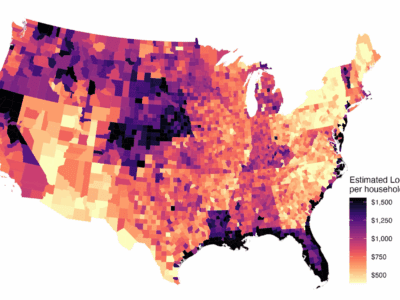Can Trump Save U.S. Coal? Not likely.
“Beautiful clean coal”, as Trump calls it, is inexorably declining.
On May 23, the Trump Administration issued an emergency order to keep a coal-fired power plant open, even though the owner and the state utility commission both wanted to close it. That’s in line with Administration policy. The title of one of Trump’s executive orders is “Reinvigorating America’s Beautiful Clean Coal Industry.” That order says, “it is the policy of the United States that coal is essential to our national and economic security.” But Trump’s efforts seem unlikely to make a dent in the long-term, global malaise of the coal industry, or its sharp decline in the U.S.
We’re now fifteen years into the precipitous decline of the coal industry. In 2008, coal provided 48% of U.S. electricity; now it’s down to 16%. According to the U.S. Energy Information Agency (EIA), U.S. coal production in 2023 was less than half of production in 2008. The EIA attributes the decline to “rising mining costs, increasingly stringent environmental regulations, and competition from other sources of electric power generation. The EIA expected another 20% decline in coal production in 2024 and 2025, with utilities working down existing inventories.
Moreover, according to EPA, the US coal fleet is aging and increasingly expensive to operate, with half the fleet hitting retirement age. As a result — contrary to what many people assume — coal plants are no longer used for baseload power, but instead to provide power during periods when demand has risen.
About 15% of coal production is exported, but the global picture is not encouraging for U.S. export growth. According to the International Energy Agency, global coal demand is growing only slightly (1.2% in energy terms), and coal’s share in the electricity mix is falling and is now at its lowest level since the agency was founded in 1974. Part of the growth was driven by increased demand for coal for steelmaking in Indonesia, and much of the rest by increased demand in the Philippines and Vietnam. In the meantime, 80% of new global power generation comes from carbon free sources, and coal use is steadily declining in developed economies.
Is Trump going to turn this picture around? The stock market doesn’t seem to think so. The Dow Jones Coal Stock Index was about 500 when Trump took the oath of office. It’s down to 425 now. That’s also a little lower than it was a year ago, when Biden was still in office. There’s no sign, in other words, of investor excitement about a possible rescue by Trump.
Trump probably can’t reverse the decline, but he may be able to slow it down a little. Given that coal is such a major air pollutant and cause of climate change, that’s a step in the wrong direction. The positive, however, is that it’s like to be a very transient step, merely postponing the inevitable for a fading energy technology.







Reader Comments